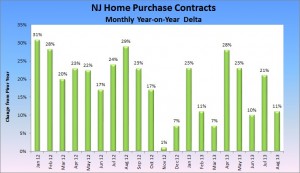From Housingwire:
Consumers ease off housing recovery gas pedal
Although consumers continue to remain relatively upbeat, their attitudes around housing may have hit a brick wall, decreasing over the past three months.
Americans tempered their optimism toward the housing market in September, indicating growing caution surrounding the fiscal policy debate, according to Fannie Mae’s recent housing results.
…
For instance, 55% of Americans continue to believe the economy is on the wrong rack, narrowing 16 percentage points in September, according to Fannie Mae.The gap could widen, depending on the outcome of the debt ceiling debate, with many experts believing the nation’s borrowing authority will be exhausted by Oct. 17.
The average 12-month home price change expectation came in at 3.1%, decreasing 0.3% month-over-month.
Meanwhile, the share of people who believe home prices will go up in the next 12 months fell to 52%, down three percentage points.
Additionally, 63% of Americans believe mortgage rates will go up in the next 12 months, increasing 3 percentage points from last month.
On an interesting note, the share of respondents who would buy if they were going to move increased to a survey high of 69%.
…
“The only thing that would derail what is happening now is backslide in job numbers,” Walters concluded. “However, we are still seeing fairly steady gains and until we see that reverse, there’s going to be a demand for housing.”

